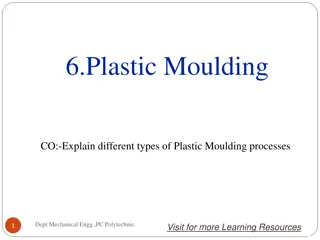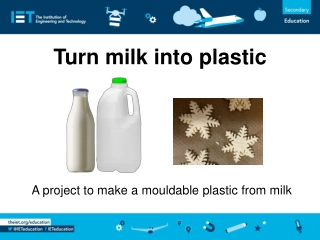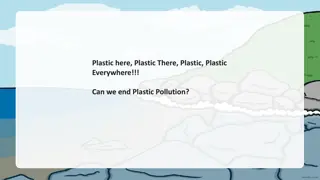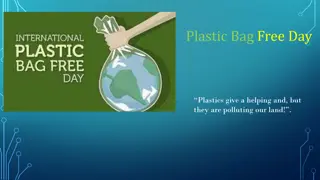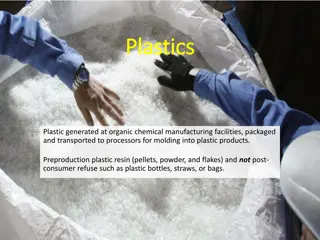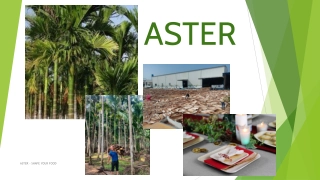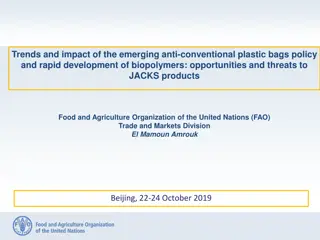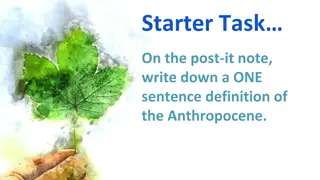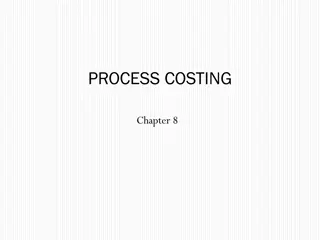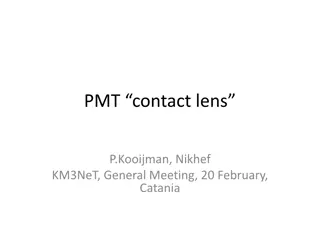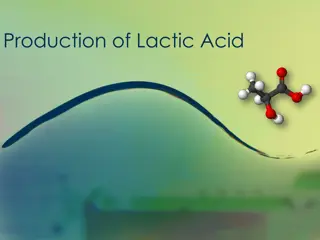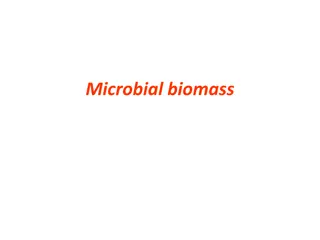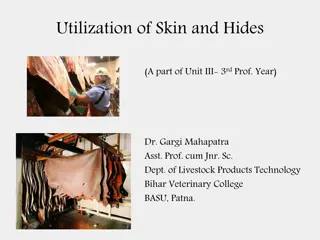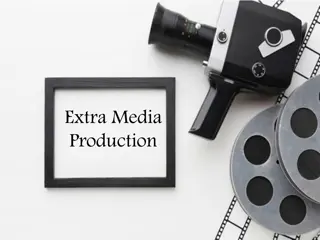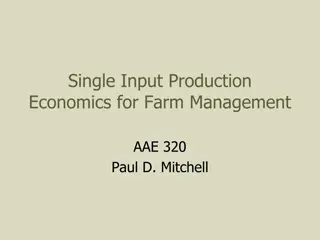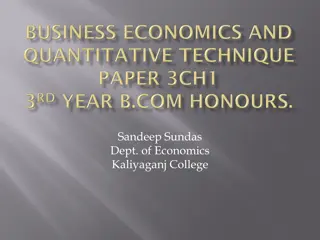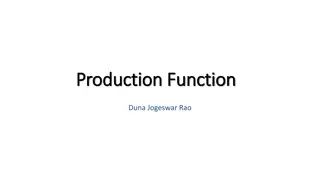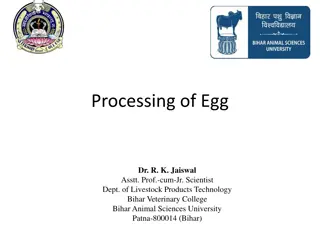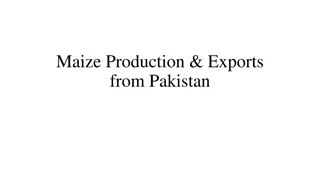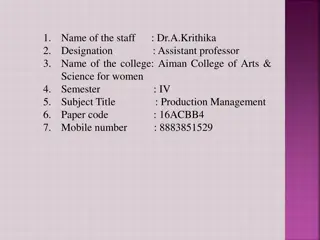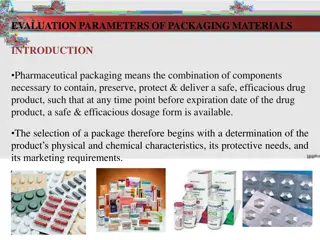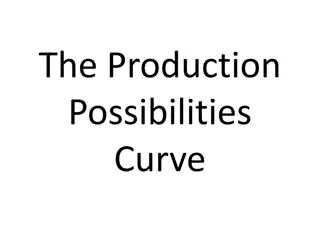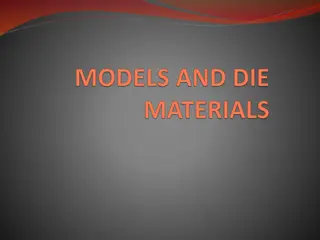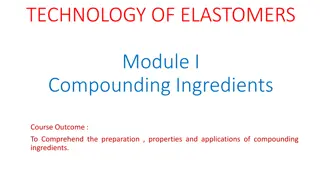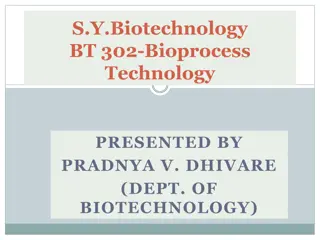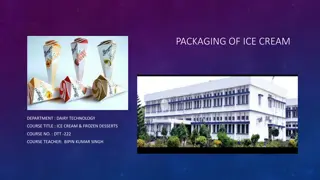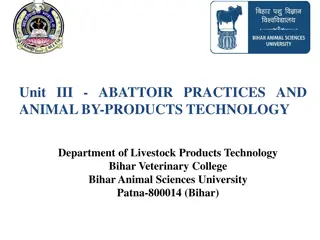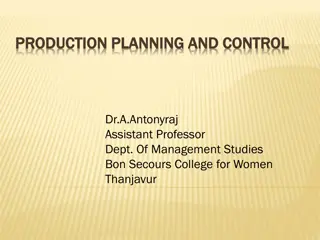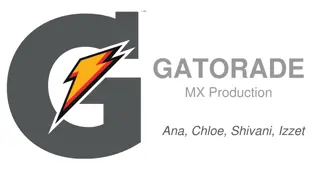Thermoforming: Plastic Products Production Process and Applications
Thermoforming is a versatile process used to produce various plastic products such as packaging, bathtubs, and interior liners. It involves heating a thermoplastic sheet, shaping it using molds, and cooling the final product. Advantages include flexible design options and low production costs, but there are limitations like non-uniform thickness and internal stresses. Different techniques like vacuum thermoforming are employed to create specific shapes efficiently.
Download Presentation

Please find below an Image/Link to download the presentation.
The content on the website is provided AS IS for your information and personal use only. It may not be sold, licensed, or shared on other websites without obtaining consent from the author. Download presentation by click this link. If you encounter any issues during the download, it is possible that the publisher has removed the file from their server.
E N D
Presentation Transcript
MODULE III THERMOFORMING, EXTRUSION AND CALENDERING 3. 3.0 To know the plastic products produced by thermoforming , extrusion and calendering 3.3.1 Identify various plastic products produced by thermoforming, extrusion and calendaring 3.3.2 Describe the production process of disposable plastic glass and egg trays from poly olefins 3.3.3 Explain the design factors such as standard dimension ratio, water hammer and stresses (external and internal) 3.3.4 State the equation and simple calculations for SDR and wall thickness for different hoop stress 3.3.5 Explain the manufacture of PVC Pipe (rigid and flexible ) with typical formulation 3.3.6 Draw and explain line flow chart for PVC and PE pipe extrusion 3.3.7 Explain the differences in the design of dies of PVC and PE pipe with sketches 3.3.8 Explain the manufacture of blown films . 3.3.9 Explain the manufacture of PVC rexin sheets and vinyl flooring with typical formulations.
THERMOFORMING Process of heating a thermoplastic sheet to its softening point and deformed it into desired shape. The process involves: Heating plastic sheet to the temperature where in softens Stretching the softening polymer against a cold mould surface Cooling the finished part and trimming excess plastics Applications : Packaging of consumer products, bathtubs, contoured sky lights, interior door liners for refrigerators
Advantages and Disadvantages of thermoforming Advantages Flexible design High production rate Low set up cost Low mould cost Rapid prototype development Low temperature requirement Disadvantages Not eligible for thermosets All parts needs to be trimmed Non uniform thickness for the parts Higher scrap Limited part shapes Internal stresses common
Thermoforming Process The thermoplastic sheet is clamped into a holding device and heated using radiant electrical heater until it is softened The sheet is then held horizontally over a mould using vacuum pressure, air pressure or mechanical force The softened sheet conforms to the shape of the mould and is held in place until it cools
Vacuum Thermoforming Flat plastic sheet is softened by heating Softened plastic sheet is placed over a concave mould cavity Vacuum draws (pressure 14 psi) the sheet into the cavity Plastic hardens on contact with mould surface Part removed and trimmed off.
Pressure Thermoforming A underneath the sheet. Utilizes positive pressure ( 50-100 psi) to force heated plastic into the mould cavity. Additional force allows forming of thicker sheets and details, undercuts and sharp corners Vent holes provided in the mould to exhaust trapped air vacuum line is also provided creating finer
Mechanical thermoforming Uses matched positive and negative moulds that are brought against heated plastic sheet, forcing it to assume their shape Typically a core plug will push the sheet into the mould cavity and force it into the desired shape. Better dimensional finish on both sides of the part control, surface
Blown film extrusion https://www.youtube.com/watch?v=qn16JtE_vLc
The die is like a vertical cylinder with a circular profile. The molten plastic is pulled upwards (up to 4 to 20 meters) from the die by a pair of nip rollers. The compressed air is used to inflate the tube around the die. In the centre of the die there is an air inlet from which compressed air can be forced into the centre of the circular profile and hence tube creating a bubble. The extruded circular cross section may be increased 2-3 times of the die diameter
The bubbles are collapsed with the help of collapsing plate. The nip rolls flatten the bubble into a double layer of film (called lay-flat). The wall thickness of the film can be controlled by changing the speed of the nip rollers. The lay-flat can be spooled in the form of roll or cut into desired shapes. Bottom side of the lay-flat is sealed with the application of heat, and cut across further up to form opening; hence it can be used to make a plastic bag.
Calendering Calendaring is the process of squeezing a plastic melt between two or more counter rotating cylinders or rolls to form a continuous film and sheet. Calendaring and blown film are the method of making plastic sheets and plastic film The sheet is formed in the range of 0. 1 to 1. 0 mm and above thickness. The sheet can be transparent, coloured, embossed, printed or laminated form.
Plastics used to create film and sheets by calendering are: Polyvinyl chloride (PVC) Modified polyethylene (PE) Polypropylene (PP) Acrylonitrile-butadiene-styrene (ABS) Thermosetting compounds
In the calendering process, molten plastic is extruded and then passed between pairs of heated rollers that squeeze the molten plastic into a sheet. The thickness of the plastic sheet depends upon the gap between the pairs of rollers. Very thin plastic sheet is called plastic film. The calendaring process usually involves using four or more pairs of rollers that gradually reduce the plastic thickness, polish the surface, add a texture or emboss a pattern into the plastic sheet. After the sheet passes between the final pair of rollers, it is cooled and fed to a winding station where it is coiled and edge trimmed. Thickness of the sheet is given by the gap between last pair of rolls. Surface quality of sheet depends on the surface of last roll
PVC rexin sheets It is a coated fabric, and PVC is usually the coating material used in upholstery, bookbinding and footwear applications Heat softened PVC material is blended with stabilizers, plasticizers at 120- 150 C for 5-10 min in a Banbury mixer Made into a rough sheet on a two roll mill before being fed to the calendar. Molten PVC is applied to cotton cloth coming out of calendering machine and the treated cloth is then subjected to pressure between steel rollers. It is then printed in desired colours and patterns. It is finally polished with varnish and dried.
PVC rexin sheets PVC Rexin formulation PVC ( Suspension Polymer) 100 DIOP (Plasticizer) 40 Barium cadmium phenate ( stabilizer) 3 Trisnonyl phenyl phosphate ( plasticizer) 1 Epoxidised Oil ( Extender) 5 Stearic acid 0.4
Vinyl flooring Vinyl flooring is extensively used because it is water- impervious, fairly durable, adjustably resilient and insulating, easy to install, available with a variety of appearances, and inexpensive. Sheet vinyl is composed of 3 components, felt paper for the bottom, a layer of vinyl foam in the middle and a protective layer of vinyl on the top.
Vinyl flooring Vinyl chloride- vinyl acetate copolymer 100 DAP ( Plasticizer) 30 Extender 15 Whiting 150 Asbestos 150 Barium- Zinc Complex 3 Calcium sterate 1 Pigment as required
A fibrous backing sheet (felt or paper) is coated with vinyl and plasticizer. The resulting sheet is printed and possibly embossed (the print layer). Then the sheet is coated again with one or more protective wear layers, the topmost of which may be polyurethane. The top or wear layer of PU coating (provides the durability, stain and scratch resistance of vinyl flooring keeps the original appearance of the floor and provides easy maintenance) is applied and sent through the oven at a higher temperature. For making cushioned vinyl sheet, blowing agents can be incorporated.
PVC PIPE Low manufacturing cost combined with desirable physical properties made PVC pipe widely used over metal pipes. Advantages includes Higher life expectancy Easier transportation Decreased insulation process Good abrasion and impact resistance Major physical properties of PVC includes Excellent chemical resistance Light weight Corrosion resistance High tensile strength
Types of PVC pipe Pressure pipe Cable and electro-conduit pipe Drainage pipe Industrial pipe Gas pipe Irrigation and domestic use pipe Sewage pipe Municipal water pipe
PVC Pipe formulation PVC 100 Tin ( stabiliser) 0.4 Paraffinic ( Lubricant) 1-1.3 Oxidised PE (plasticise) 0.2-0.25 Calcium stearate (stabilizer) 0.4-0.8 Titanium dioxide (base pigment) 1-1.5 Acrylic (processing aids) 0-1.5 Calcium carbonate 2
Extrusion of PVC pipe Twin screw extruders with counter rotating screws are used. Advantages of twin screw includes Low residence time superior homogenisation Transport of melt into die without any hang up Maximum mix is mixed per screw RPM Heat input is east to control
Feed zone - Open flight to ensure maximum material intake Preheating zone - Large surface area which can be obtained by a multiple thread design which ensures good heat convection Compression or pre plasticizing zone - Precompress the materials and create no or little over heating Vacuum zone - To prevent material from getting into the venting holes, ensure effective degassing Metering zone - Appropriate pressure build up and balanced energy to ensure good homogenization without over heating which makes high output rates possible
Line diagram of pipe production Twin screw extruder Calibrating/sizing die Die head Vacuum tank Cooling Unit Haul off unit Socketing machine Cutting unit
Material melted in twin screw extruder Molten polymer pushed from the extruder through a die and takes its shape Molten polymer exiting the die is first cooled, usually pulled through a water bath Sizing dies ( aluminium or brass) are used to control shape of molten polymer as it enters the cooling bath. If there were no sizing dies he molten polymer will shrink uncontrollably before it solidifies. A puller is used to pull the polymer extrudate through the cooling tank after it leaves the sizing die, usually pulls faster than the velocity of polymer exiting the die, thus posses orientation of the polymer and reduces parts size Once solidified, extruded pipe is usually rolled or cut into individual parts and stacked Socketing unit helps in assembling PVC pipes lengthwise.
Designers check list Pipe design Pipe Wall thickness, SDR ratio Standard Dimension Ratio (SDR) is ratio of outside pipe diameter (OD) to wall thickness (t), method of rating pressure piping High SDR ratio the pipe wall is thin compared to the pipe diameter; low-pressure rating Low SDR ratio the pipe wall is thick compared to the pipe diameter; high-pressure rating. Higher pressure rating means higher wall thickness and higher weight which in turn increases the purchase cost, installation cost, maintenance cost, and more space requirement.
Hydrostatic (hoop) design stress (HDS) or design stress maximum tensile stress in the wall of pipe due to internal hydrostatic pressure that can be applied continuously with high degree of certainty that failure of pipe does not occur HDS = hoop stress / safety factor As per ASTM specification, safety factor for PVC is 2. Working pressure term used to describe the maximum allowable pressure a tubular product may be subjected to while in-service.
Expansion and contraction When a pipe is installed at lower temperatures than the water temperature, it will expand when it is taken into service or when ambient temperature rises. It will contract when it is installed at a higher temperature than the service or ambient temperature L = L0 T L = change in length = coefficient of linear expansion (0.00036 in. /ft/ 0F L0 = original length of pipe T = change in temperature
Water hammer Liquid in motion possesses kinetic energy When it is stopped or changed, energy must be dissipated, which creates pressure surges called water hammer Pressure surge - sudden increase in the pressure of the liquid in a pipeline brought about by an abrupt change in flow velocity. Velocity of pressure waves (V) is calculated using K = fluid bulk modulus = 300,000 psi for water E = modulus of elasticity = 400,000 psi for PVC pipe ???? ? ? ? = ??? ? } {?+ SDR Standard dimension ratio Pressure increase created by velocity changes (due to water hammer) can be calculated for a PVC pipe as p = 0.0134 V ( V) V change in water velocity


